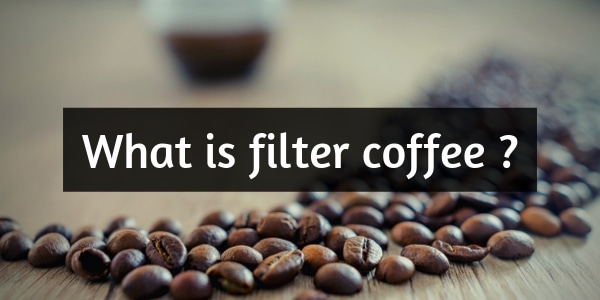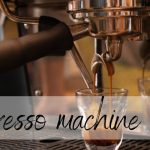If you've ever had coffee, you know there's ways and ways of brewing it. Some love espresso, some swear by instant coffee, some ask for drip coffee and everything in between.
I for one have a filter machine (drip coffee) and I've cycled through almost every way of making coffee before settling on this one. It's not necessarily the best way to drink coffee, but it's one of the ways. Let me explain.
Table of Contents
So what is drip coffee ?
Drip coffee is coffee that has been brewed with hot water and ground coffee, directly into a filter. The coffee is strained through the filter, and it drips into an empty coffee pot, hence the name 'drip coffee'. This coffee usually yields high volumes, serving up to 12 cups of coffee (or 4 mugs).
Since the filter is very fine, it traps any ground coffee and coffee dust, resulting in a very 'clean' cup of coffee. It's one method of making coffee that keeps the grounds in contact with the water for a longer time (at least compared with espresso).
Some like drip coffee, some don't. There are ways of making drip coffee by hand, and there are machines that do that for you. You can tinker with the taste, but it's up to each person's own preferences, and we'll talk about that in this article.
Drip coffee gives one of the better coffee tastes
But why do some people absolutely love this coffee, while some people would rather not ? Well, it's got to do with the taste, I know you know that. But there are 2 certain aspects of the taste.
You see, drip coffee requires medium-ground coffee. This will extract a sufficient amount of caffeine without becoming too bitter.
The hot water will stay for no more than a few minutes in contact with the grounds, which will again extract only enough coffee to make it tasty but not very bitter.
True, coffee is a bit bitter on its own. But it has other qualities as well. With a good filter, those qualities shine through. Some people don't like this kind of taste, even if it's closer to the 'real' coffee taste.
The other taste-related problem is the filter itself. Now there are 2 filters you can get:
- A reusable plastic mesh filter, which will need thorough cleaning after every single use.
- A single-use paper filter, easy to use, easy to dispose of.
While the plastic filter is a chore to wash and make sure the stale coffee in its mesh doesn't affect the taste, the paper is another story.
Paper filters sometimes impart a... well, papery taste to the coffee. A bit like how you'd expect vase water to taste. Very vegetal if you're buying low quality.
Maybe a more detailed comparison between paper and permanent coffee filters will help.
Of course, you can trade up to high-quality paper filters, or rinse the regular paper filters to take the paper taste out. But that doesn't really work with the filter machines, only the manual ones.
If you ever run out of paper filters though, there are plenty of things to substitute them with.
So there's that beautiful series of compromises we all have to think of when it comes to our coffee.
Still, despite the whole paper-or-plastic filter argument, the drip-coffee itself is much better than many other brewing methods, at least in my opinion.
Why does it need a filter ?
Well, the main thing is that the filter traps every little particle in the coffee. I don't mean just the coffee grounds, but also the powdery particles that are sometimes present in your cup of coffee.
That has to do with how much the coffee was roasted, and how finely it was grounded. A dark roast is drier, and thus more powdery. A smaller ground is more powdery, and if it's also a darker roast it will be very powdery.
This can be very annoying when you're just trying to enjoy you morning cup and choke on a bit of coffee grounds.
Still, there are times when you might still notice grounds in your filter coffee. Why is that ?
It has to do with how much the coffee grounds bubble up when the hot water touches them, since sometimes they can spill over the filter and straight into your coffee.
You won't be able to notice this until it's too late and the grounds are already in the liquid.
You can avoid this by not putting too much coffee in the filter, even if you're serving a large number of people and need 10 cups right now. Better to make in 2 batches and serve clear coffee.
Another thing that might happen is that your paper filter might fold in on itself when you insert the holder back into the machine.
This means the water touches much less coffee than it should, so you're left with almost no coffee at all, just murky water in the pot. You can work around this by making sure the edge of the filter does not reach above the edge of the holder.
Plastic or paper filter, which is best ?
This one is completely up to you. Taste-wise, plastic would be the way to go. That means your machine comes with a plastic filter already, all you have to do is just clean it with soap and water after each use.
Even so, the stain on the mesh will remain, and in a few months it will affect the taste of the coffee. Still, you can change the filter after a while if it becomes a problem.
I for one decided that cleaning the filter is too much for me, and I just rinse the whole machine with a full pot of water after each use. Alongside a weekly clean-up of the whole thing.
Instead, I use paper filters. Which have their own drawbacks, mind you.
Paper filters are simple, effective, and a complete hit-or-miss depending on which brand you're getting. The thing is, the paper they're made out of needs to be porous enough to allow water to escape, but also keep the grounds inside the filter and not rip open.
This sometimes means the paper ends up with a funny taste, much like poor-quality tea bags. Which reminds me. In a pinch, if you're ever out of coffee filters and absolutely can't use anything else, (empty !) teabags are alright. You're just going to have to layer them smartly.
(If you like this article so far, you can pin it to your Pinterest board by clicking the image below. The article continues after the image.)
Drip coffee is a good way to serve an entire party of people
Another great thing about drip coffee is that it will help you serve a large number of people at a time. This is why most mom-and-pop joints have drip coffee machines.
Plus the fact that making a big pot now, and keeping it heated is very convenient. Not tasty, but convenient.
For example my own machine can serve up to 15 cups of coffee in one go. That's its maximum load, and I would not recommend ever using the machine's maximum load only because the filter basket can't properly give you clear coffee for that many cups.
The ground coffee will bubble when the hot water touches it, and you need a whole lot of coffee for 15 cups.
How much coffee should I add to the filter ?
This again depends on you entirely. How much coffee you put in depends on how strong a taste you like. You can tinker with both the coffee and the water.
For example I like my coffee fairly strong. On a scale of 1 to 10, where 1 is almost tea-like and 10 gives you goosebumps, I think I land around a 7.5-8. So what I'm going to tell you is my preference, and you can try a cup like that.
You might like it, or you might hate it. The point is that you have a point of reference for how strong it can be, and you know how to scale up or down from it, towards a 4 or a 9 for example.
I use 200 ml/6.7 oz of water (measured before boiling and straining through coffee) and 1.5 heaping teaspoons of ground coffee, per cup. That yields you about 150 ml/5 oz of actual coffee to drink, since quite a bit of water will stay behind in the grounds and evaporate when boiling.
You might want more, you might want less. But that's the ratio I use, and you can use that as a reference.
A good drip filter recommendation
I'm going to tell you what you should look for when you get a good drip coffee machine, and how to look for it.
For the most part the machine is going to have a system of delivering the water to your coffee grounds. That can either be a spray/shower-type, or a drip type.
You should be looking for a spray type since it will deliver water to more coffee grounds and give you more value for your money.
Another thing to look at is how large the space under the filter basket is. The place where you place the pot. It needs to be large enough to put a decent-sized pot there, but not too big so you can't add as much coffee into the filter as you'd like.
For example this one is a very well known coffee maker, and it's got a single serve option as well. You can program it to brew you a fresh pot in the morning if you like (or any other time).
The only thing to watch out for is the paper filters. They are not cone filters, but are more like cupcake papers. round and with a flat bottom.
They're easy to find, but you need to know to not get cones. You can also get a permanent filter to go along with it, and you're good to go.
For a machine that serves you a full 12-serve pot, having a single-serve option might be a blessing.
You can check the listing on Amazon here, and read the reviews as well.
Final thoughts
Drip coffee really is convenient, I have to say. I've been through Turkish style, espresso, Moka pot, coffee pods, and odd incarnations of the Turkish brewing, only with a ridiculously large pot of coffee, for the entire family.
I loved the Turkish brew, but I always had a bit of coffee grounds at the bottom of my cup. So for me, the drip-filter method is pretty much the best.
You might agree, you might disagree. But now you know what drip coffee is, and how it's meant to help coffee drinkers around the world enjoy their cuppa.
If you want to know more about coffee or tea, feel free to check the related articles below. Who knows what else you might find ?







